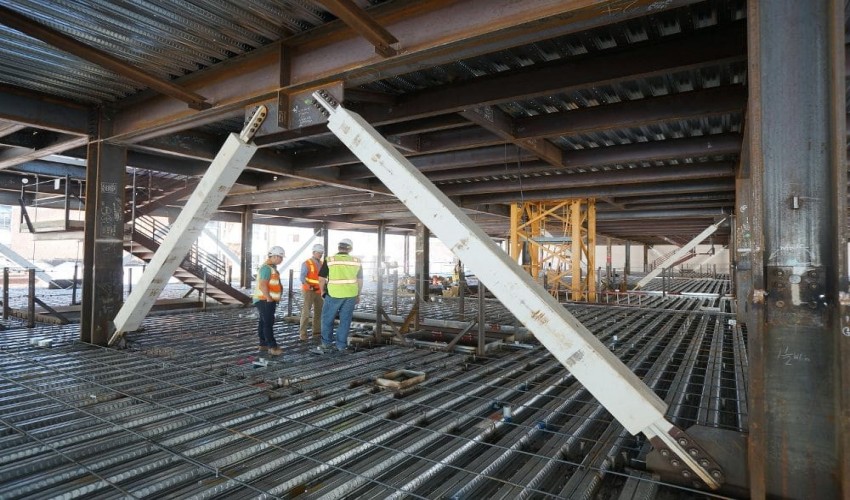
Earth quake Engineering
An earthquake (also known as a quake, tremor or temblor) is
the shaking of the surface of the Earth resulting from a sudden release of
energy in the Earth's lithosphere that creates seismic waves. Earthquakes can
range in size from those that are so weak that they cannot be felt to those
violent enough to propel objects and people into the air, and wreak destruction
across entire cities. The seismicity, or seismic activity, of an area is the
frequency, type, and size of earthquakes experienced over a period of time. The
word tremor is also used for non-earthquake seismic rumbling.
At the Earth's surface, earthquakes manifest themselves by
shaking and displacing or disrupting the ground. When the epicenter of a large
earthquake is located offshore, the seabed may be displaced sufficiently to
cause a tsunami. Earthquakes can also trigger landslides and occasionally,
volcanic activity.
Tectonic earthquakes occur anywhere in the earth where there
is sufficient stored elastic strain energy to drive fracture propagation along
a fault plane. The sides of a fault move past each other smoothly and
aseismically only if there are no irregularities or asperities along the fault
surface that increase the frictional resistance. Most fault surfaces do have
such asperities, which leads to a form of stick-slip behavior. Once the fault
has locked, continued relative motion between the plates leads to increasing
stress and therefore, stored strain energy in the volume around the fault
surface. This continues until the stress has risen sufficiently to break
through the asperity, suddenly allowing sliding over the locked portion of the
fault, releasing the stored energy.This energy is released as a combination of
radiated elastic strain seismic waves, frictional heating of the fault surface,
and cracking of the rock, thus causing an earthquake. This process of gradual
build-up of strain and stress punctuated by occasional sudden earthquake
failure is referred to as the elastic-rebound theory. It is estimated that only
10 percent or less of an earthquake's total energy is radiated as seismic
energy. Most of the earthquake's energy is used to power the earthquake
fracture growth or is converted into heat generated by friction. Therefore,
earthquakes lower the Earth's available elastic potential energy and raise its
temperature, though these changes are negligible compared to the conductive and
convective flow of heat out from the Earth's deep interior.
In its most general sense, the word earthquake is used to
describe any seismic event—whether natural or caused by humans—that generates
seismic waves. Earthquakes are caused mostly by rupture of geological faults
but also by other events such as volcanic activity, landslides, mine blasts,
and nuclear tests. An earthquake's point of initial rupture is called its
hypocenter or focus. The epicenter is the point at ground level directly above
the hypocenter.
- Dynamic Loads
- Basics of Seismology
- Behavior of Structures During Earthquake
- Earthquake Resistant Features of Structure
- Fundamentals of Earthquake Vibrations of Structures
- Earthquake Load Analysis on Structures
- Ductile Detailing
- Seismic Soil - Structure Interaction
- Inelastic Response of Structures for Earthquake Forces
- Base isolation for earthquake resistant design of structures
- Vibration of Elastic Method
- Numerical Methods for Dynamics Systems
- Seismological Modelling and Simulation
- Vulnerability and Risk Analysis
- Ground Shaking Hazard
- Earthquake Precursors and Early Warning Systems
- Ground Improvement Techniques
- Seismic Evaluation and Retrofitting of Structures
- Advanced Seismic Micro zonation
- Seismic Disaster Mitigation and Management
Recent Published
Submit Manuscript
To give your manuscript the best chance of publication, follow these policies and formatting guidelines.


